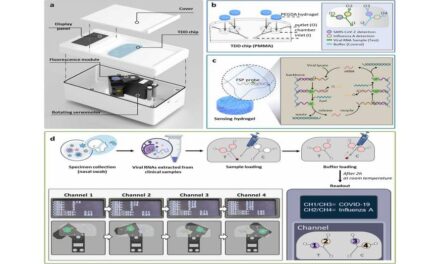When a couple is struggling with infertility, guidelines recommend that both the man and woman undergo a tandem fertility evaluation. For men, this includes providing at least one semen sample for analysis, and the current gold standard of sperm fertility evaluation requires men to provide a sperm sample in a lab or clinic, which is then examined within an hour. After an hour, the sperm begin to die, and the results are no longer considered accurate.
However, a new study from Keck Medicine of USC challenges this tight timeline, showing that an at-home, mail-in testing kit can accurately test sperm up to 52 hours after the sample was given, despite sperm degradation.1
“This is a game changer for men because it means they no longer have to come into a lab or clinic to provide a sample, an experience some find unnerving and challenging,” says Mary Samplaski, MD, a male infertility specialist with Keck Medicine. “This allows men to secure highly accurate male fertility results while providing the specimen from the comfort of their own home.”
Such flexibility to mail in a specimen rather than give one in a provider’s office is even more important during the covid-19 pandemic. “Some labs have closed, and people may be hesitant to visit a clinic right now,” Samplaski adds.
With the goal of making sperm testing more accessible, Samplaski and colleagues compared the accuracy of a new at-home, mail-in semen analysis system with that of the 1-hour, in-office sperm test.
While other at-home tests have been developed over the years, they have not been successful, says Samplaski. This new testing system, developed in 2019 with feedback from fertility urologists, was selected for the study because it contains a unique solution that promises to gauge the specimen’s fresh findings for days, even after the sperm has degraded.
For the study, researchers collected multiple semen samples from 164 men and analyzed them using the 1-hour test. They evaluated the specimen for sperm count, shape, and motility (the ability of the sperm to move through the woman’s reproductive tract to fertilize the egg).
Next, researchers added the mail-in kit preservation solution to the samples, retesting the semen four times during a 52-hour period from when the samples were given. (While normally a mail-in sample going to a lab would take 24 hours to reach its destination, researchers wanted to test the limits of the kit in case of a postal delay).
Specimens were also exposed to a range of temperatures that mimicked different climates a sample might have to withstand when shipped from anywhere within the United States.
At the end of their comparison, researchers discovered that the mail-in specimens were able to analyze the quality of the sperm with near perfect accuracy when compared to fresh samples.
“Essentially, there was no difference in the results,” said Samplaski. “While this study was limited in scope, the findings make the mail-in system a reliable option to consider for routine clinical use in evaluating sperm.”
She recommends that couples facing infertility ask their doctors about mail-in sperm testing.
“The more options a couple has in their fertility care, the better,” she says. “Making evaluative tests easier keeps couples moving forward and ultimately improves their chances of conception.”
Reference
- Samplaski MK, Falk O, Honig S, Shin D, Matthews W, Smith JF. Development and validation of a novel mail-in semen analysis system and the correlation between one hour and delayed semen analysis testing. Fertil Steril. Epub. January 7, 2021. doi: 10.1016/j.fertnstert.2020.10.047.





